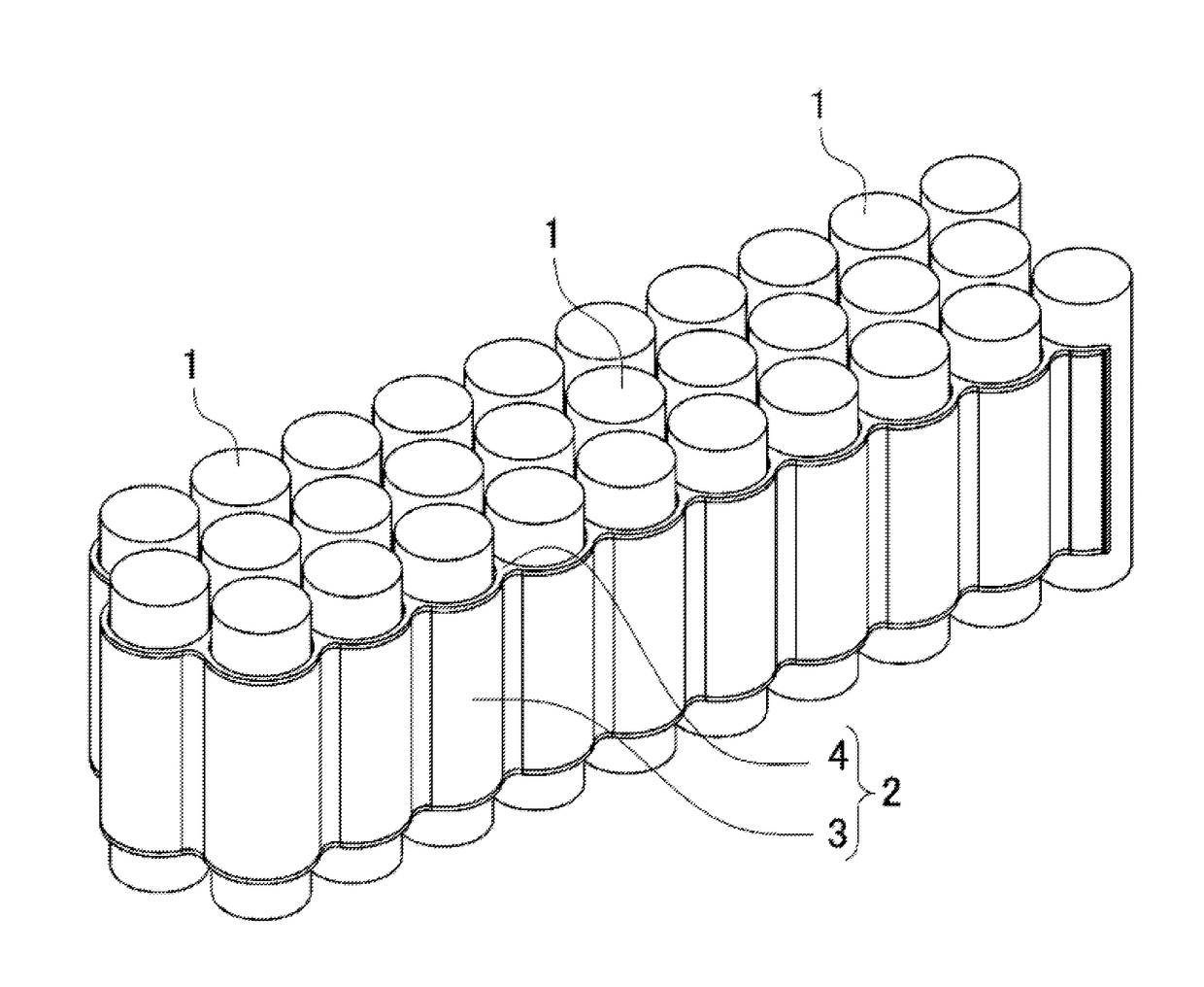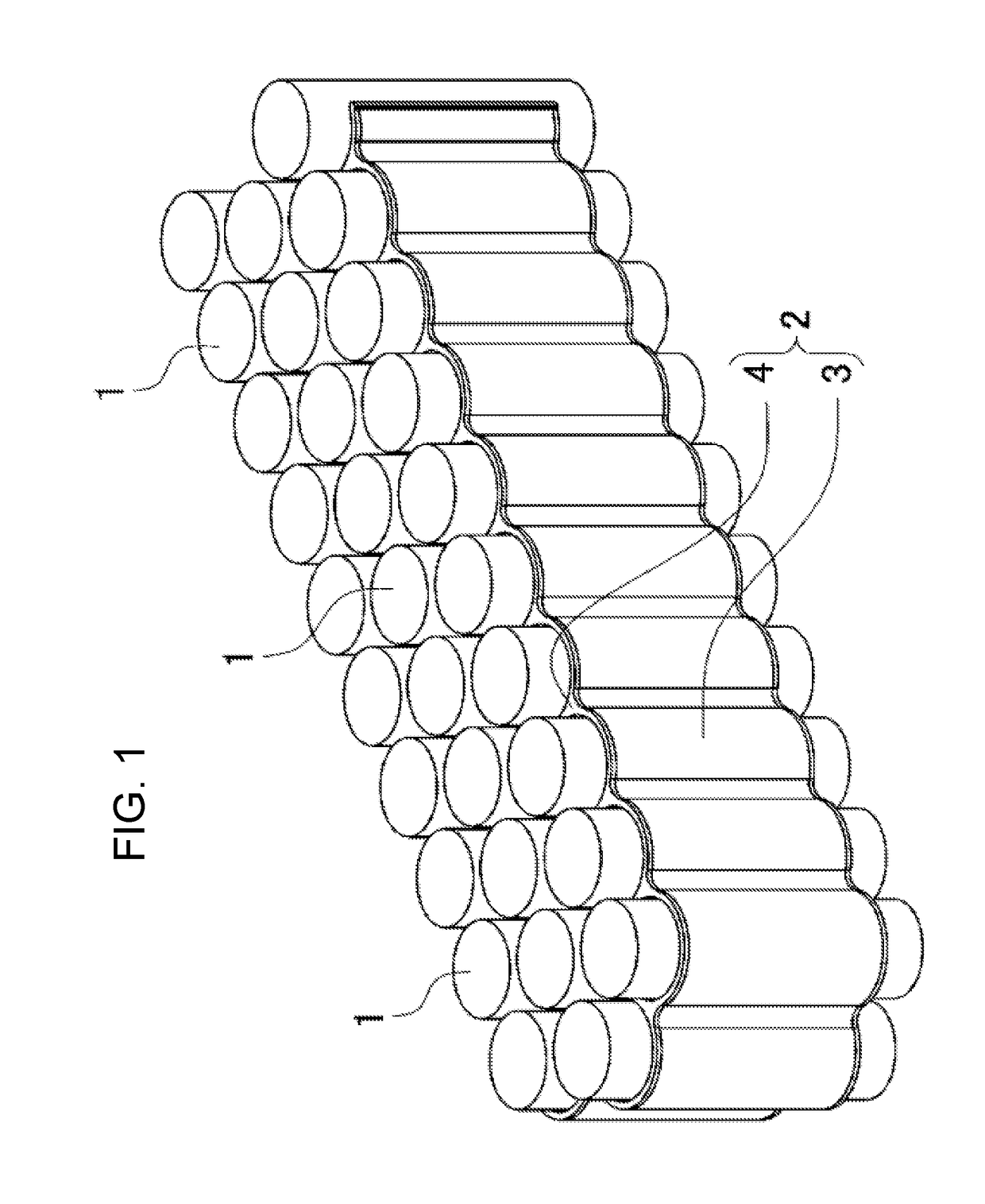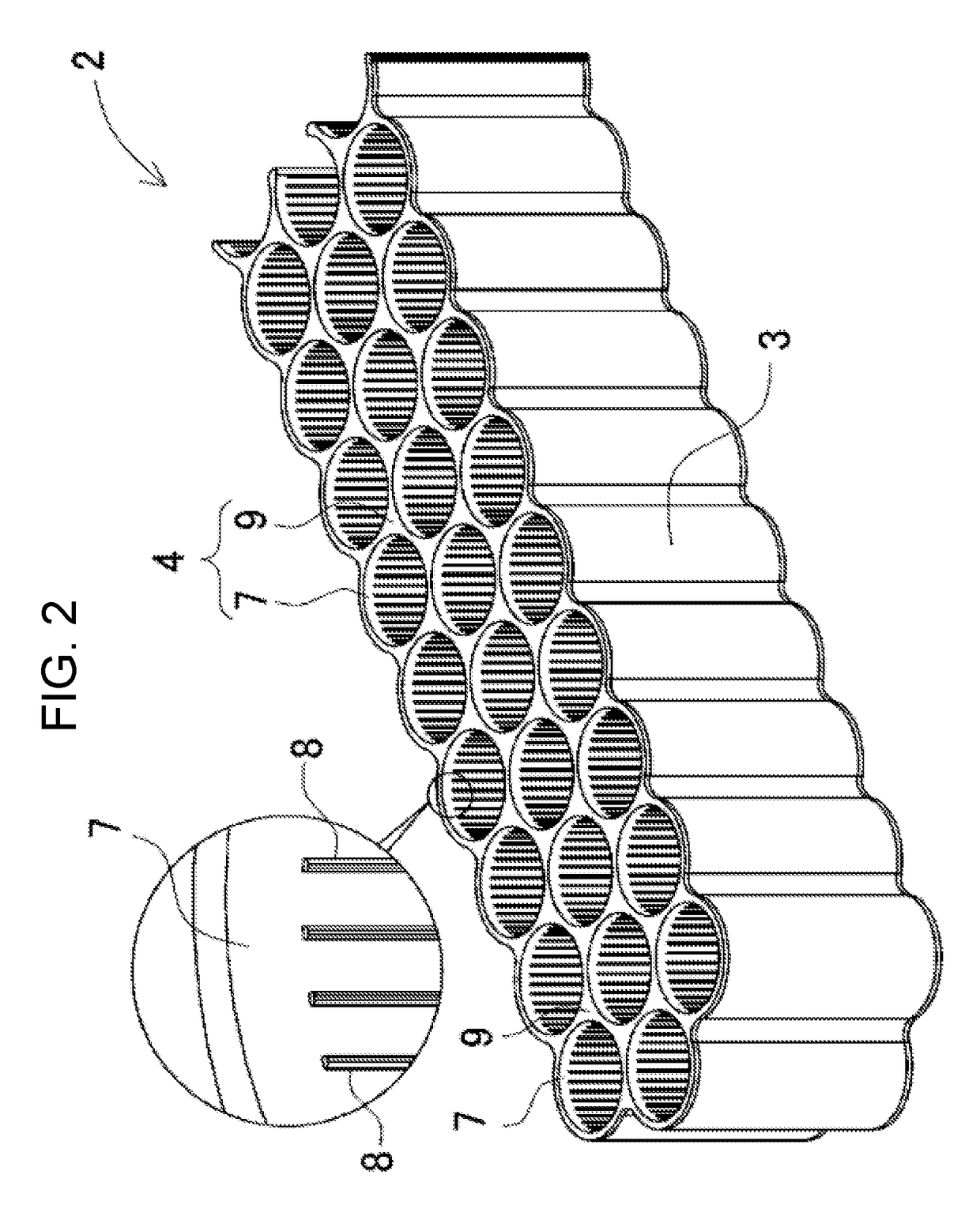Battery pack and heat dissipating holder
a battery cell and heat dissipation holder technology, applied in the field of batteries, can solve the problems of limited battery cell availability, inability to dissipate heat generated in the battery cell from the whole periphery, and inability to meet the needs of users, so as to achieve efficient dissipation of heat generated in the battery cell, high safety, and reduced temperature
- Summary
- Abstract
- Description
- Claims
- Application Information
AI Technical Summary
Benefits of technology
Problems solved by technology
Method used
Image
Examples
Embodiment Construction
)
[0064]Hereinafter, examples of the present invention are described with reference to the accompanying drawings. The following examples show battery packs for embodying the technical ideas of the present invention. The present invention is not limited to the following battery packs. In this description, members shown in the scope of claims are not limited to the members of the examples.
[0065]A battery pack shown in FIG. 1 includes a plurality of battery cells 1, and heat dissipating holder 2 in which battery cells 1 electrically interconnected in series and in parallel are disposed at fixed positions. Each battery cell 1 is a cylindrical lithium-ion secondary cell. As the cylindrical lithium-ion secondary cell, a cell frequently used as part number 18650 for various applications such as a laptop microcomputer, a bicycle, and an automobile can be employed. In the battery pack of the present invention, battery cell 1 is not limited to the cylindrical lithium-ion secondary cell. All ce...
PUM
| Property | Measurement | Unit |
|---|---|---|
| thickness | aaaaa | aaaaa |
| thickness | aaaaa | aaaaa |
| thermally-conductive | aaaaa | aaaaa |
Abstract
Description
Claims
Application Information
 Login to View More
Login to View More - R&D
- Intellectual Property
- Life Sciences
- Materials
- Tech Scout
- Unparalleled Data Quality
- Higher Quality Content
- 60% Fewer Hallucinations
Browse by: Latest US Patents, China's latest patents, Technical Efficacy Thesaurus, Application Domain, Technology Topic, Popular Technical Reports.
© 2025 PatSnap. All rights reserved.Legal|Privacy policy|Modern Slavery Act Transparency Statement|Sitemap|About US| Contact US: help@patsnap.com



